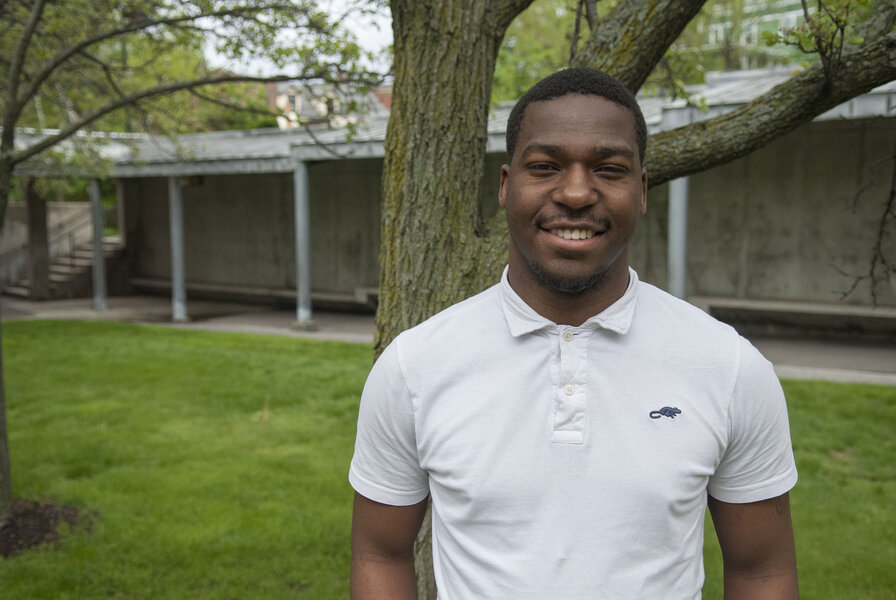Are community colleges finally 'having a moment'?
Loading...
Attending his fourth college in as many years, Kevon Smith is the first to admit it’s taken him a while to figure out how best to manage his education.
But if there’s one thing his experience has taught him, says Mr. Smith, now studying business management at Roxbury Community College (RCC) in Boston, Mass., it is that two-year colleges are the best value for money, and do the most to support their students.
Smith is not alone in his perception. A recent wide-ranging, multi-part survey of a broad demographic spectrum, conducted by think tank New America, canvassed people’s perceptions of America’s higher-education system.
It found that a comfortable majority – 75 percent – of respondents agreed that most people benefit from enrolling in college. Yet many fewer were certain that the fees that colleges charge are in sync with the value that they deliver.
When asked if colleges were worth what they cost, only 43 and 40 percent of respondents answered positively about private four-year colleges and for-profit colleges, respectively. That number jumped to 61 percent for public four-year colleges, but when it came to community colleges the figure nearly doubled, reaching 82 percent.
The study found more good news for community colleges: They scored at or near the top, compared to other sectors, when respondents were asked whether they contribute to a strong work force and prepare people to be successful.
When asked if colleges always put their students first, 62 percent said they believed that community colleges did, while 52 percent said the same about public four-year institutions, 53 percent about private four-year schools, and a much lower 39 percent for for-profits.
While the results are not necessarily surprising, some higher education experts say, they highlight both the growing stratification of the higher education system and the vital role community colleges play in forwarding upward mobility.
“Two-year community colleges really seem to be having a moment,” said Rachel Fishman, a senior policy analyst at New America and a co-author of the report.
“Accessibility and affordability, I think those are two important words to live by in the future … and community colleges provide that,” says Mitchell Chang, a professor of higher education and organizational change at the University of California, Los Angeles.
The survey doesn’t probe why Americans perceive community colleges to be a better value, but affordability is certain to be a major consideration for many students. According to the report, college tuition and fees have outpaced inflation at a staggering rate for years. Since 2006, the Consumer Price Index for those has shot up 63 percent, compared to 21 percent for items like food, energy, and housing. The costs of college books and housing have risen risen 88 percent and 51 percent, respectively, over the last decade.
“I think to be honest that the four-year public sector is starting to get really expensive, and out-of-reach, for a lot of middle-income Americans, let alone low- and moderate-income Americans,” says Ms. Fishman. It may be, she says, that for many Americans community colleges have become “the only affordable pathway” and that some students will begin to see them as “the only choice [they] have.”
But Dr. Chang notes that, while community colleges offer accessibility, they do not necessarily offer equality of opportunity. He calls an associate's degree an important step – by some measures boosting earning capacity by $7,200 for women and $4,600 for men – but adds that community college should not always be viewed as an end point.
“It's not just an issue of access to higher education,” says Chang, “It's an issue of access to the right kinds of higher education.”
Smith, from RCC, agrees that his associate’s degree won’t take him as far as he’d like to go. He says his hope is to eventually transfer to a pre-law program at a four-year institution.
But while he’s working toward that goal, says Smith, he can’t help noticing that his friends who attend four-year schools are paying much more tuition for what looks to him like a very similar experience.
His friends are “paying three times as much as me,” says Smith. “But we’ve got the same book, we've got the same exact everything. [They’re] paying for [their] school’s name, that's it.”








